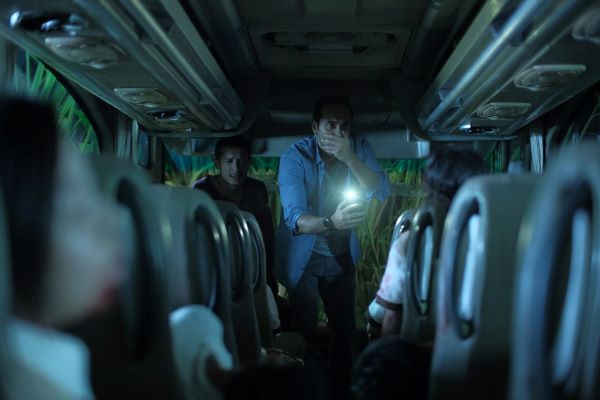They don’t mess about in Indonesia when it comes to genre films. Ever since The Raid brought the country’s small but pugnacious scene to greater prominence, there has been a steady stream of technically adept, uncompromising, and utterly brutal action and horror offerings, like raw, dripping sacrifices to the cinematic gods. Two of its more prominent exponents team up for this loose, loving remake of a beloved early ’80s Indonesian cult favourite. Both writer Joko Anwar (Satan’s Slaves, Impetigore) and director Kimo Stamboel (Macabre, Headshot) have been plying their trade since the mid-’00s, and The Queen of Black Magic is among the finest in both of their careers. Essentially a simple revenge tale blown up to incorporate a deranged danse macabre of horror tropes, it will nevertheless captivate hardened viewers as familiar fare served with gusto and flair.
Nadya (Hannah Al Rashid, from Timo Tjahjanto and Gareth Evans‘ gonzo ‘Safe Haven’ segment of V/H/S/2) is travelling with her family for a reunion at the orphanage in which her husband Hanif (Ario Bayu) grew up. Near their destination they hit what they think is a deer, but is actually a child. This is only the beginning as the bloody secrets of the orphanage are revealed and a dark force begins to take vengeance against the former occupants and their families.
It’s fair to say that Stamboel and Anwar throw the kitchen sink at the audience. Right from the opening seconds there is the overhead shot of a car straight from The Shining, a country road surrounded by cornfields, and a sudden collision. Before long they have added the shifty residents of the orphanage, a tale of witchcraft and missing children, and a door that’s been ominously locked for 20 years. It could easily be overstuffed, but for the first half Stamboel and Anwar foreground the characters. With a busy ensemble cast, they are swiftly sketched for sure, but enough to establish personalities and flaws that the evil can lever open and exploit. This includes a decades-long secret held by Hanif and friends, and, interestingly, a non-specific case of body dysmorphia that results in a DIY tummy tuck. Crucially, we care about them when the titular antagonist turns the screw.
“I’m here to create hell,” the sorceress snarls. “Because I’m not sure there is a hell after death.” This is as much of a mission statement for the project as a whole as it is a ripe piece of dialogue. Once the filmmakers let go of the leash, The Queen of Black Magic becomes a relentless hell-scape to rival the unspeakable subterranean horrors of Can Evrenol‘s Baskin. Men, women, children – noone is safe. It becomes such a thrill ride that any worries of originality are set aside as millipedes burst from eye sockets and staple guns are punched into flesh. Sadly, the use of a disability to create horror is one old trope that could have been left in the time of the the original Queen. But once again, such is the filmmakers’ control of their material, it remains one of many queasily effective moments.
Yes, The Queen of Black Magic is a patchwork of easily identifiable influences and references. It is cruel, bleak, and even nihilistic in places, but there is absolutely zero cynicism. Everything is employed as part of a satisfying hole. After a decade or so of western filmmakers borrowing from Asian cinema from the late-’90s onwards, it’s interesting to see the winds blow in the opposite direction. The set up is classic enough to be reminiscent of a Henry James or a Shirley Jackson, with an approach spiked with the unbridled ferocity of the New French Extremity. It is made with the care and attention of people who have clearly bathed in the genre all their lives and know how to gross out a crowd with precision and verve. It is one spell that any gorehound would be glad to fall under.
Available on Shudder from Thu 28 Jan 2021
